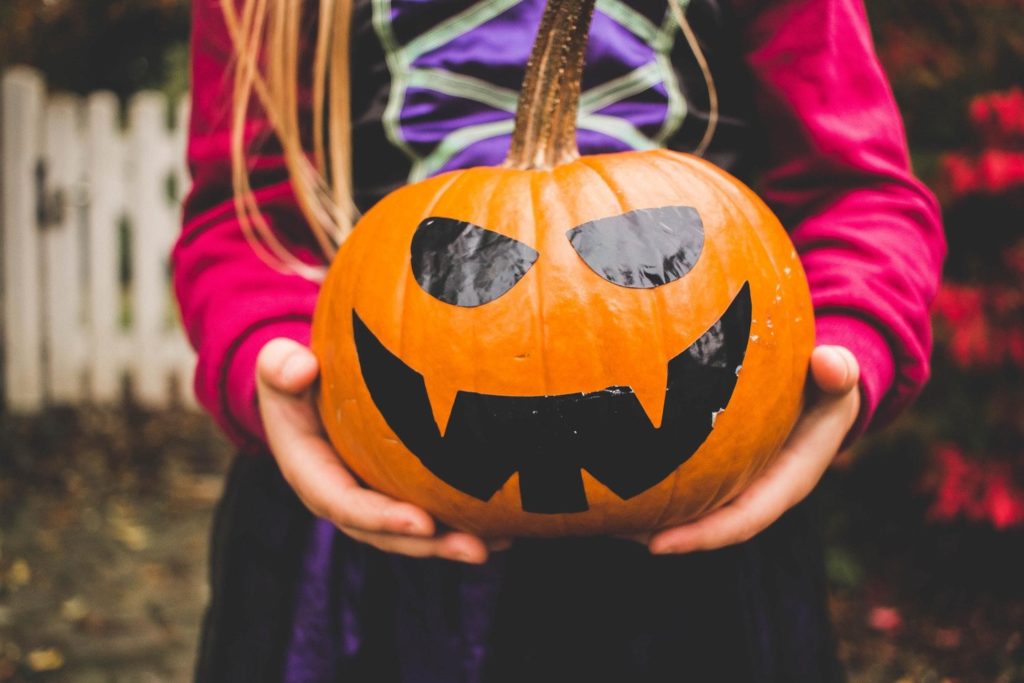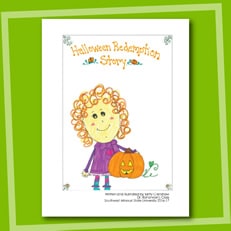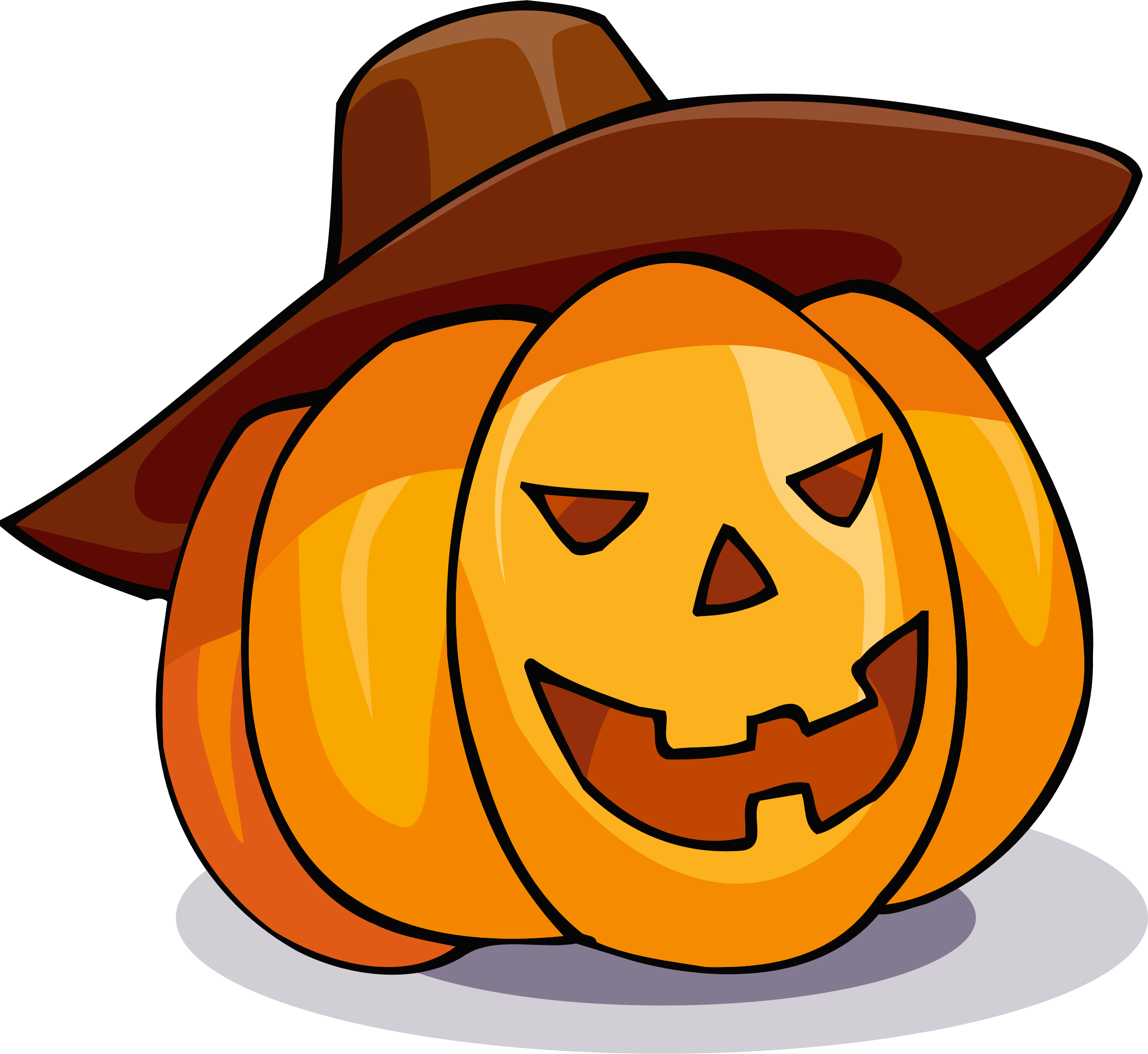
October is truly one of the most magical months of the year. There’s something about the turning of the leaves and that crisp autumn chill creeping into the air that calls to the storytellers within us and begs us to spin some spine-tingling campfire tales. And then comes Halloween, when children and adults alike get to be creative, play dress up, and make believe for one unforgettable night.
Of course, just like vampires need to be invited to come in, sometimes our muses need a little extra encouragement too—and that’s exactly what writing prompts are for. Aimed specifically at elementary school students, these five Halloween-themed prompts are the perfect precursors to all manner of All Hallow’s Eve festivities. They’re also great starting points for some spectacularly spooky class projects.
Prompt #1: “Tell a ghost story as if you are the ghost.”
 This Halloween prompt puts a unique spin on a classic idea. Rather than writing about an imaginary encounter with a ghost in a haunted house, ask your elementary students to try seeing things from a different perspective and write as if they are the ones doing the haunting. This can make for quite the chilling tale—but it also leaves the door open for more gentle-hearted storytellers to write something a little closer to Casper if they prefer.
This Halloween prompt puts a unique spin on a classic idea. Rather than writing about an imaginary encounter with a ghost in a haunted house, ask your elementary students to try seeing things from a different perspective and write as if they are the ones doing the haunting. This can make for quite the chilling tale—but it also leaves the door open for more gentle-hearted storytellers to write something a little closer to Casper if they prefer.
PROJECT IDEA
Turn the writing process into a haunting Halloween writing party! Decorate your classroom ahead of time and have some creepy sound effects handy to provide ambience while your students write and illustrate their ghost stories. Then, collect your students’ stories and publish them in an anthology-style classbook they can read from whenever the Halloween spirit strikes them—even after the season officially ends.

Prompt #2: “Design your own Halloween Tree. Then, write a story starring your tree.”
 While this writing prompt is the perfect follow-up to reading The Halloween Tree by Ray Bradbury, it can also work just as well as a standalone story starter. It challenges your students on multiple levels. First, it invites them to think about what makes a tree a Halloween Tree. Second, it asks them to invent and draw an entirely original tree of their own. And third, they get to construct a narrative around the tree they’ve just invented!
While this writing prompt is the perfect follow-up to reading The Halloween Tree by Ray Bradbury, it can also work just as well as a standalone story starter. It challenges your students on multiple levels. First, it invites them to think about what makes a tree a Halloween Tree. Second, it asks them to invent and draw an entirely original tree of their own. And third, they get to construct a narrative around the tree they’ve just invented!
This is ideally suited to older elementary students with more writing experience—however, you can easily adapt it to younger writers by asking them to simply describe the tree in detail, or assigning a more direct story starter such as, “Write about how you would feel if you saw this tree while trick-or-treating.”
PROJECT IDEA
If you thought one Halloween tree was creepy, imagine walking through a whole forest of them! Ask your students to draw an extra copy of their trees—or, scan their trees and print a copy of each—and cut out the copy. Grab a big sheet of art paper and lay it out on the floor or a large table. Have your students glue their trees one at a time onto the paper—some overlap is fine, but make sure not to completely cover anyone’s creation—until you’ve assembled an entire haunted wood full of Halloween trees. Hang it on the wall for decoration, and take a photo to use as the cover for a classbook collection of all your students’ individual trees and tales.
Prompt #3: “Make up your own magic spell and explain when you would use it.”
 No Halloween is complete without a little hocus pocus. Ask your elementary students to put on their witch hats and warlock cloaks to come up with their own magic spells and write down instructions for how to cast them. These can be anything from a fun rhyming poem to use as an incantation to a list of yucky potion ingredients or magic dance moves. Then, ask them to describe a situation in which their spell would come in especially handy. It’s a great way to get creative while teaching your kids about the importance of writing clearly—after all, if their instructions aren’t precise, how will other witches and wizards learn how to cast their spells?
No Halloween is complete without a little hocus pocus. Ask your elementary students to put on their witch hats and warlock cloaks to come up with their own magic spells and write down instructions for how to cast them. These can be anything from a fun rhyming poem to use as an incantation to a list of yucky potion ingredients or magic dance moves. Then, ask them to describe a situation in which their spell would come in especially handy. It’s a great way to get creative while teaching your kids about the importance of writing clearly—after all, if their instructions aren’t precise, how will other witches and wizards learn how to cast their spells?
PROJECT IDEA
In addition to the writing prompt above, ask your students to add illustrations to their instructions—for instance, they can draw and label ingredients for their potions, or they can draw someone performing the spell. Then, collect their spells into one magical tome and publish it as a class spellbook!
Prompt #4: “You come across a creepy crawly creature while trick-or-treating. What does it look like, and what do you do next?”
 Just because Halloween is magical doesn’t mean it can’t also be scientific. You can add a little biology to this witch’s brew with this prompt by asking your elementary students to include the scientific name of their chosen specimen as well as some fun facts about it, like what it likes to eat or where it typically lives. Alternatively, for a more artistic spin, you can ask them to “discover” a new creepy crawly of their own.
Just because Halloween is magical doesn’t mean it can’t also be scientific. You can add a little biology to this witch’s brew with this prompt by asking your elementary students to include the scientific name of their chosen specimen as well as some fun facts about it, like what it likes to eat or where it typically lives. Alternatively, for a more artistic spin, you can ask them to “discover” a new creepy crawly of their own.
PROJECT IDEA
Sometimes the best way to help your students begin a story is by telling one. Modify the prompt above by asking your kids to imagine that they’re entomologists and they’re exploring a creepy forest just crawling with bugs and bats and other unsettling things. They’ve just spotted a particularly interesting specimen. Their assignment is to create field notes, including a labeled drawing of the specimen and its parts as well as a detailed description of facts and observations concerning the creature they’ve chosen to feature. Their notes will then be published in a professionally bound “scientific journal” classbook—just like real researchers!
Prompt #5: “Make believe you have traveled to another time and place. Describe what celebrating Halloween looks like where you’ve ended up.”
 This Halloween prompt works well as both as history lesson and a lesson on understanding and exploring other cultures. After discussing some traditions from different times and places around the world together as a class, ask them to choose one they find particularly interesting and describe it as if they’re living it now. This is a nice alternative to the typical prompts asking your students about their families’ traditions as it is inclusive to all of your kids, even those whose families do not celebrate Halloween.
This Halloween prompt works well as both as history lesson and a lesson on understanding and exploring other cultures. After discussing some traditions from different times and places around the world together as a class, ask them to choose one they find particularly interesting and describe it as if they’re living it now. This is a nice alternative to the typical prompts asking your students about their families’ traditions as it is inclusive to all of your kids, even those whose families do not celebrate Halloween.
PROJECT IDEA
Create a Time Traveler’s Guide to Halloween by digging a little deeper into the writing prompt above. Instruct your students to do a little research of their own to find out more about the time, place, and tradition they’ve chosen, and ask them to write as if their information will be used by time travelers. They can even accompany their writing with full-color illustrations to help travelers get a good idea of what they can expect from each destination. Collect and publish their findings as a class guidebook and keep it on a highly visible, easily accessible shelf—just in case a future time traveler needs to grab it in a hurry!
Get Your Markers Ready!
Regardless of which Halloween traditions (if any) you or your students practice, autumn has long been a season of harvest and community; the days grow short, the nights grow long, and stories grow ripe for the picking. With these five prompts, you’ll be well-equipped to help cultivate your student writers and harvest the fruits of their own creativity—and have a little spooky fun while doing it.
For free resources to help harness the spirit and creativity of All Hallow’s Eve for use in the classroom, be sure to check out our online teacher’s lounge, and sign up today for your free publishing kit!





